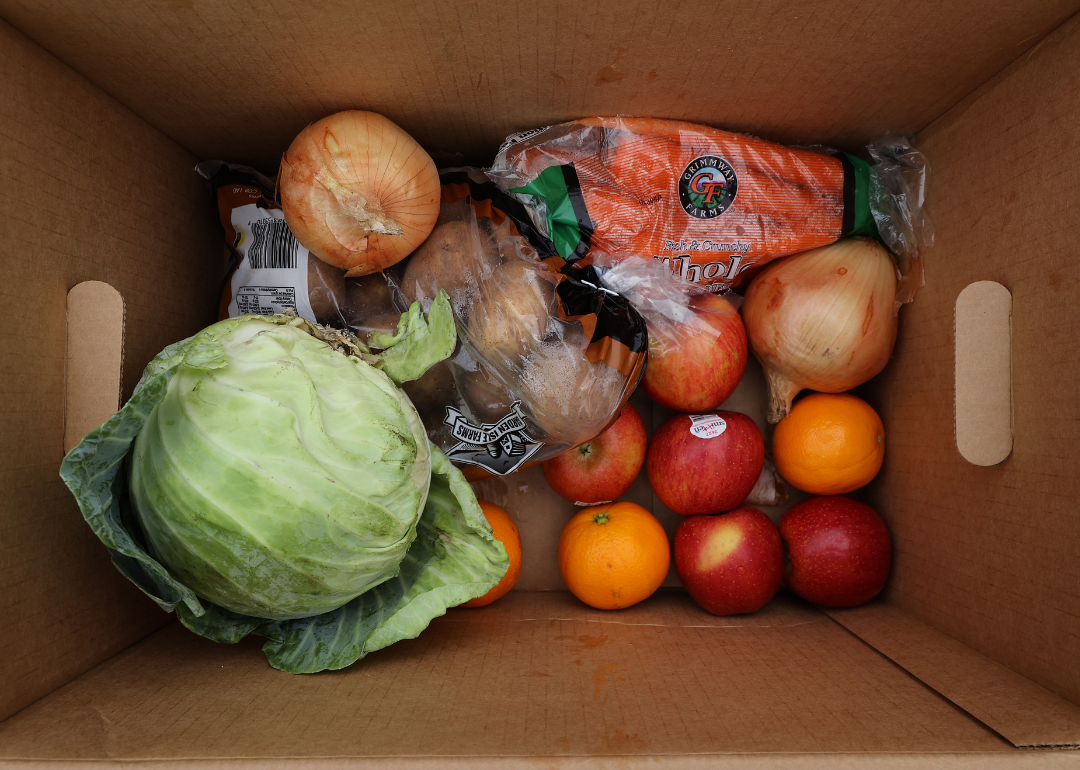
50 facts about food insecurity in America
50 facts about food insecurity in America
COVID-19 has impacted nearly every American, but some have fared worse than others. Many people have faced and continue to face the dilemma of how to put food on the table.
While it may be hard to believe, the overall share of the U.S. population experiencing food insecurity did not change between 2019, the year before the start of the pandemic, and 2020, one year into the pandemic. But when we take a closer look at the composition of the overall share of people, it's clear that some of the most vulnerable populations—like children, the unemployed, and single-parent households—faced unprecedented hardship.
To understand how food access is affecting Americans both before and in the context of the COVID-19 pandemic, Stacker compiled a list of 50 food insecurity facts. Our information comes from the country's largest anti-hunger organization, Feeding America, as well as No Kid Hungry, universities, scientific journals, Census Bureau data, and other sources. Throughout the piece, the phrase "food insecurity" is used distinctly from the term "hunger," which, for these purposes, refers to the physical discomfort or state of being brought about from a lack of food, as per terminology from the United States Department of Agriculture (USDA).
If you're having trouble finding enough to eat, get in touch with a food pantry or soup kitchen in your community. These organizations can offer direct help with groceries, hot meals, and other essentials. Government programs such as SNAP and WIC can also help with financial support for purchasing food on your own.
And if you're in the position to help others, consider making a financial donation to a local or national food bank. While many people often donate food or supplies, monetary contributions can make a bigger difference by going toward bulk purchases at substantial discounts.
Keep reading to better understand the current state of food insecurity in the United States.
You may also like: What the world's most polluted beaches look like today
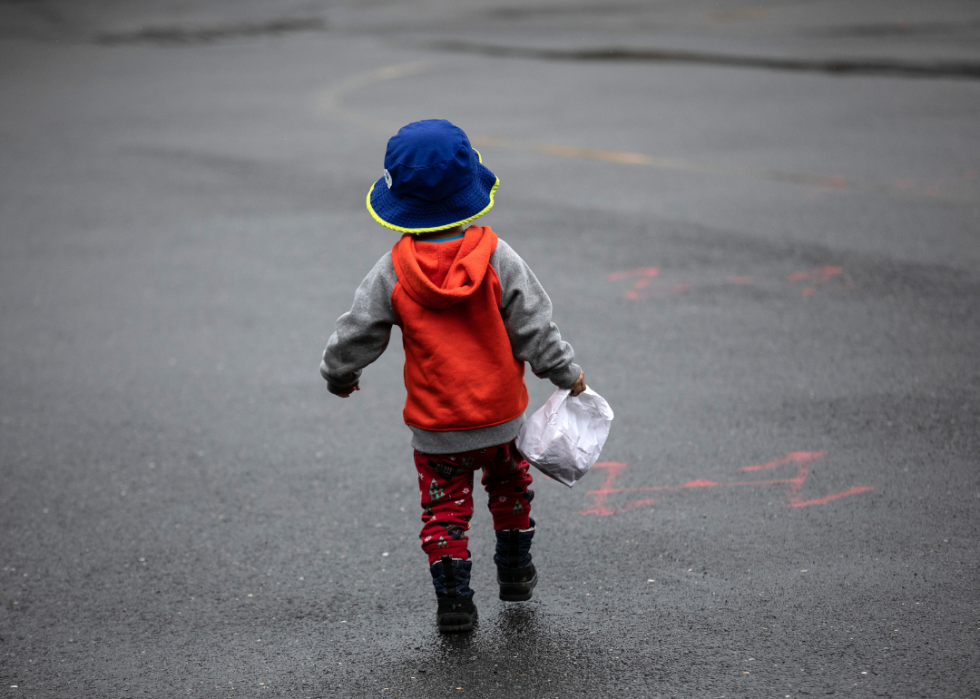
There are two categories of food insecurity
The United States Department of Agriculture uses two categories to determine food insecurity in a household. “Low food security” means the household has experienced negative changes in their diet, such as reduced quality or variety of food. “Very low food insecurity” has to do with disrupted eating patterns and lower amounts of food eaten by a given family.
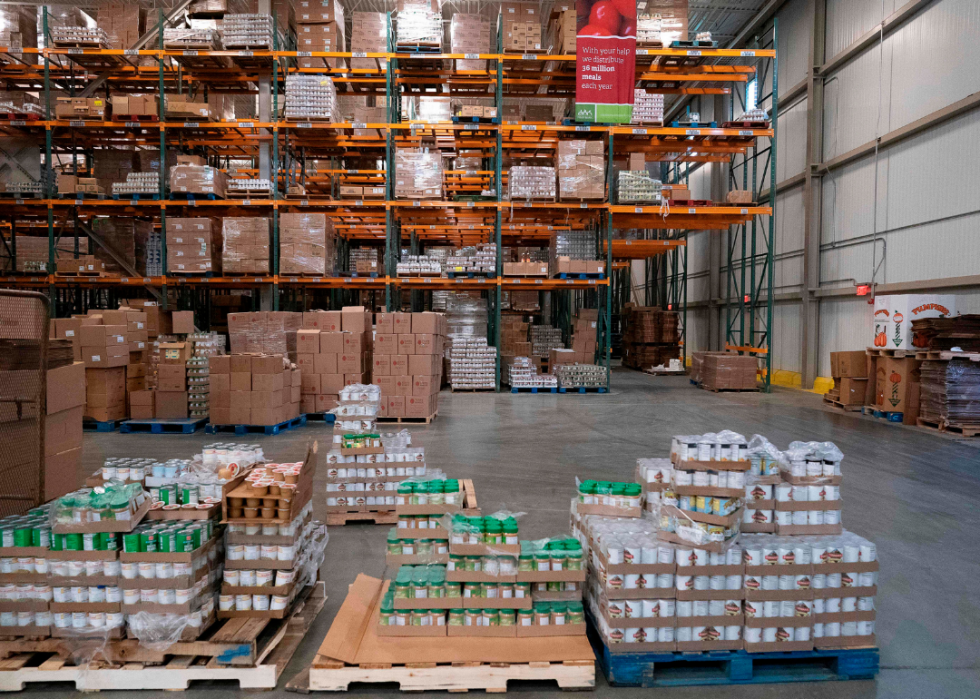
There’s a difference between food banks and pantries
The terms “food bank” and “food pantry” are often used interchangeably, but they actually refer to different types of organizations. A food bank is a nonprofit organization that collects and stores large amounts of food to distribute to communities. A food pantry, on the other hand, is a place where needy families can go to pick up free food in their towns or cities.
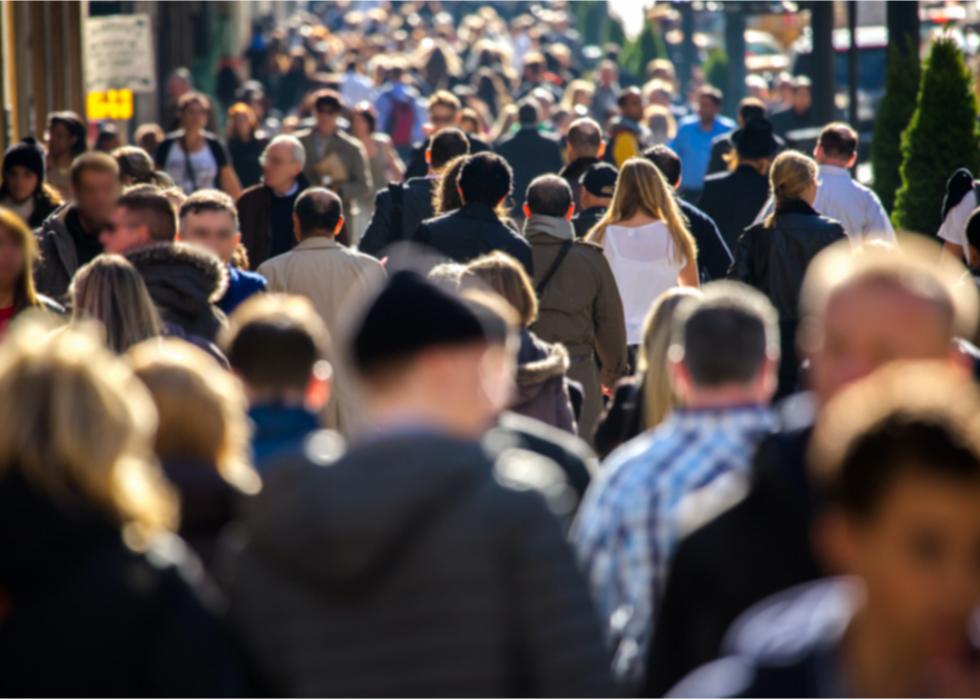
Food insecurity was in decline before the pandemic
Around 13.7 million households (or 35 million people) faced food insecurity in 2019. That figure included more than 10 million children. Despite that number sounding high, food insecurity was in fact at its lowest rate since the Great Recession.
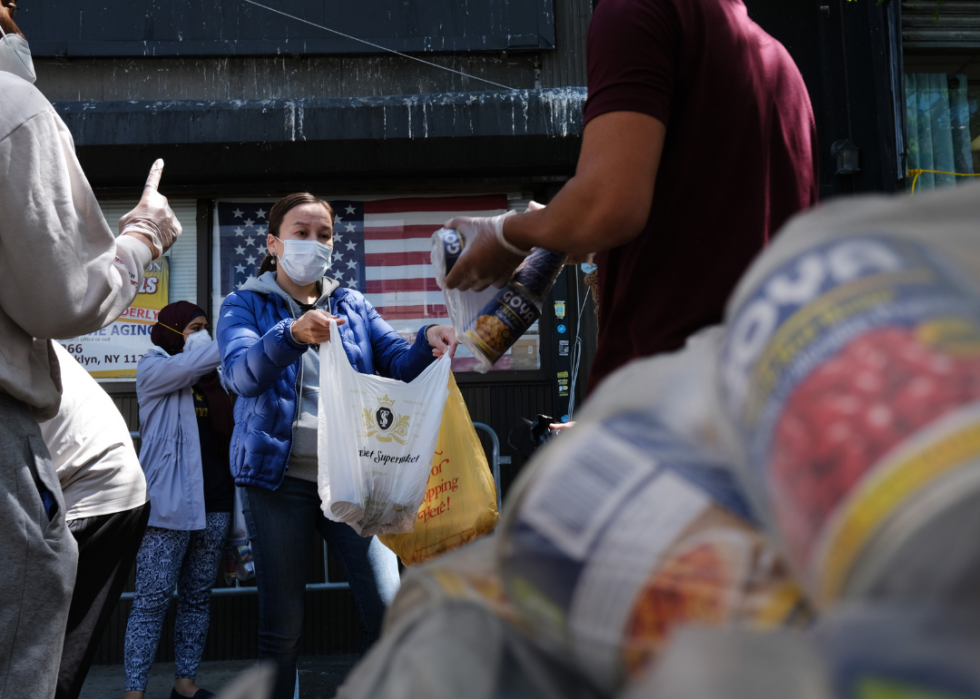
The total share of food-insecure households remained unchanged in 2020
Amid the economic devastation of the pandemic, overall rates of food insecurity did not drastically change in 2020. In both 2019 and 2020, the total share of households in the U.S. classified as food insecure was reported to be 10.5%.
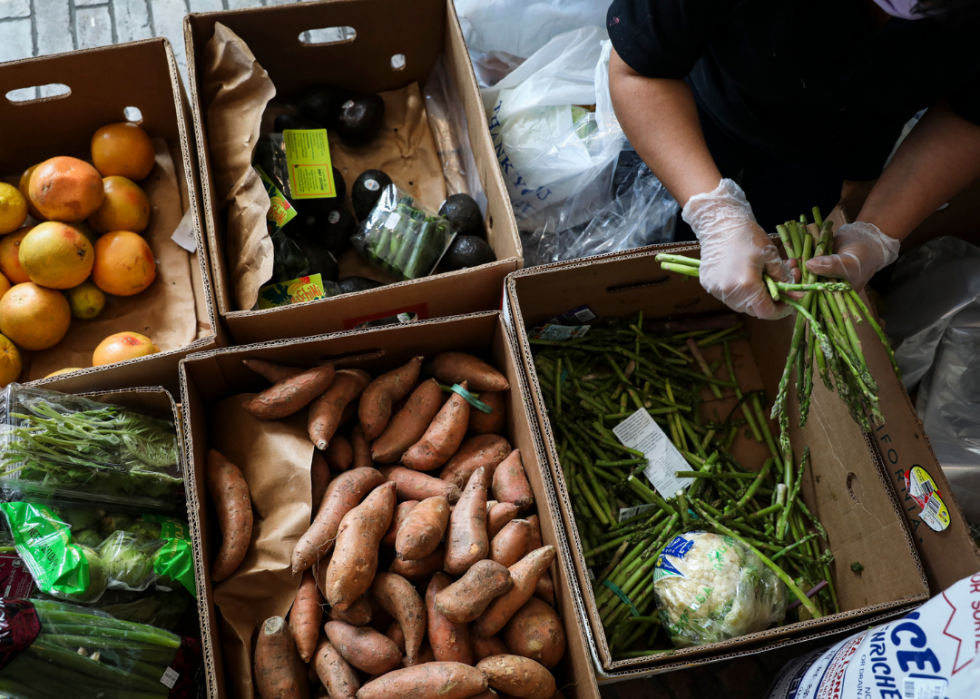
The share of households with very low food security was unchanged
About 3.9% of households in the U.S. (or 5.1 million people) experienced very low food security at some point during 2020. According to the USDA, this is essentially unchanged from 4.1% of households reported in 2019.
You may also like: Counties with the highest rate of food-insecure children
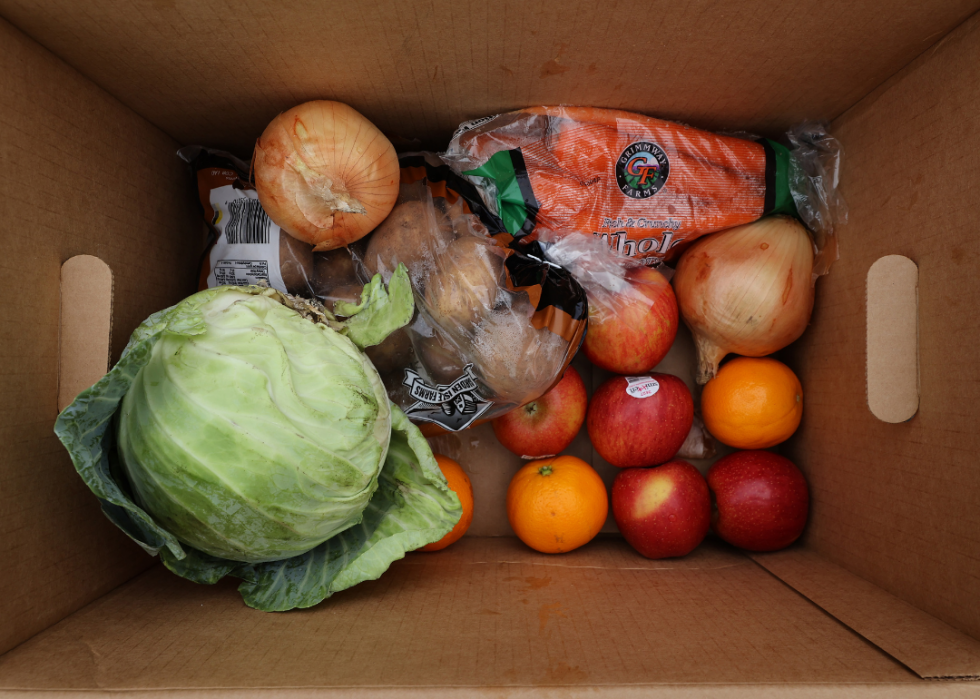
In 2020, many adults had to go without
According to a USDA survey representing 5.1 million households nationwide, 46% of respondents reported losing weight because they couldn’t afford food. Roughly 30% of respondents said they skipped an entire day of meals because they could not afford to eat.
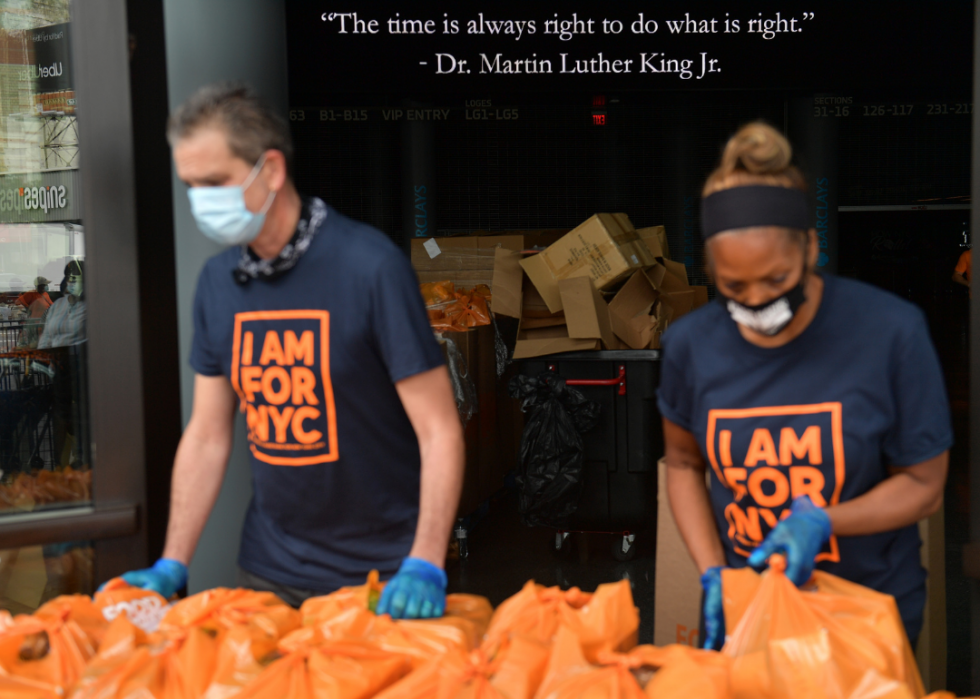
Almost half of those using food banks in 2020 did so for the first time
Feeding America saw a 60% increase in people relying on food banks this year, with roughly four of every 10 people who’ve used food banks during the coronavirus pandemic doing so for the first time. The Associated Press found that Feeding America distributed close to 57% more food in the third quarter of 2020 than that of 2019.
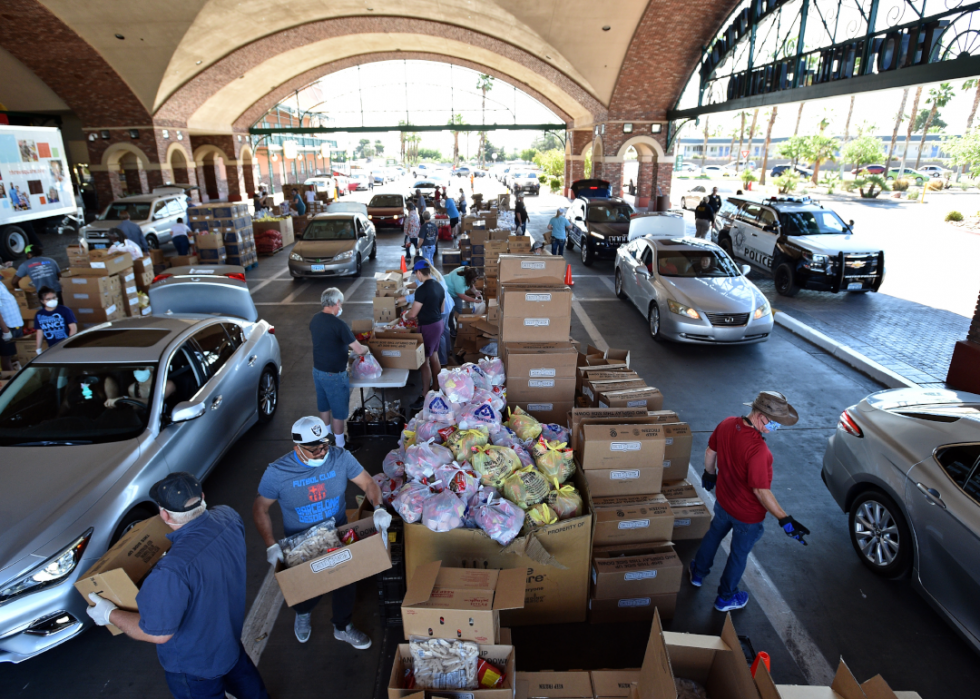
Food insecurity increased for households with children in 2020
The number of households with children experiencing food insecurity increased from 13.6% in 2019 to roughly 15% in 2020. One contributing factor to this increase was the lack of access to daily school lunches due to school closures. The National School Lunch Program served 33% fewer meals during the last school year. According to the Economic Research Service, school lunches are an essential source of food and key nutrients for students from food-insecure and marginally insecure households.
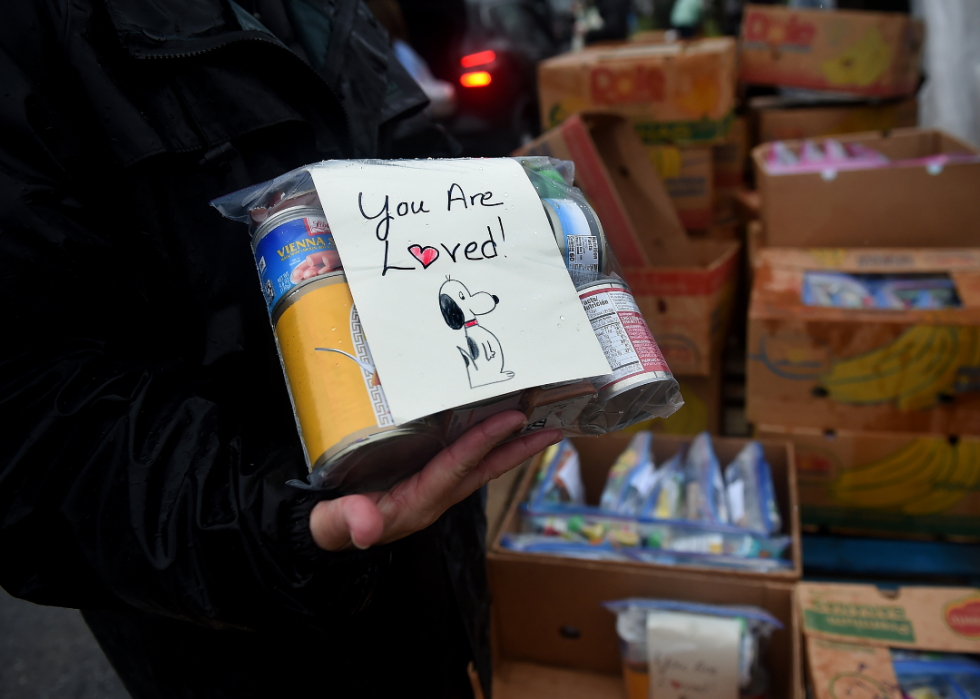
A quarter of American families with children don’t have consistent access to food
A July 2020 report from the Brookings Institution found that 27.5% of households with children are food insecure. In around two-thirds of these families, the researchers found evidence of children facing food insecurity.
You may also like: A timeline of WWII, the most devastating conflict in history
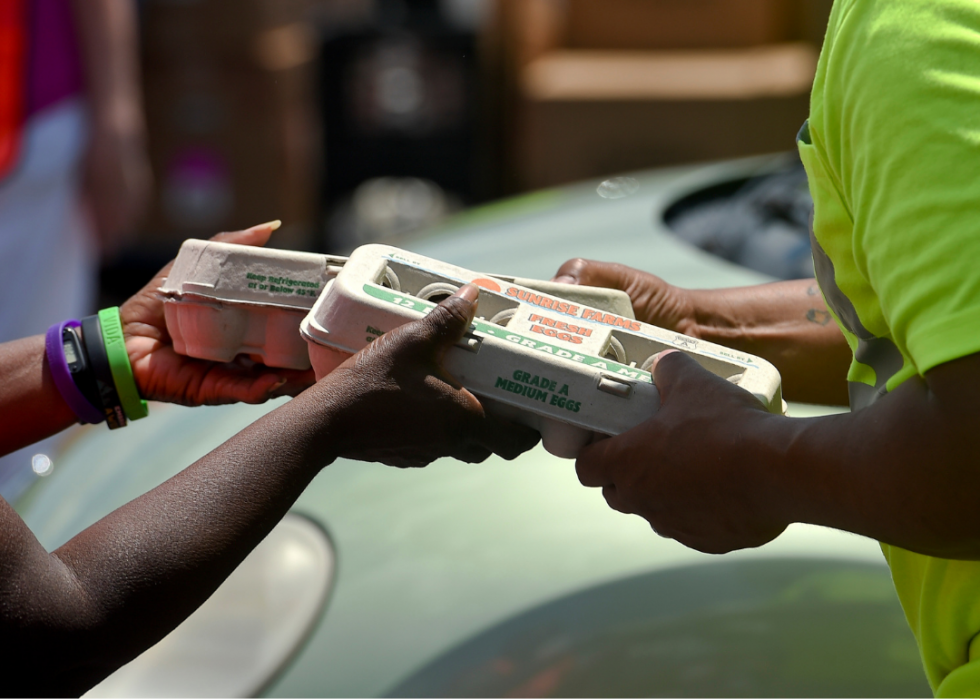
Food insecurity is most prevalent among Black, non-Hispanic Americans
Over 21% of Black Americans sometimes or frequently don't have enough to eat, according to 2020 data from the USDA. This is more than twice the national average (10.5%).
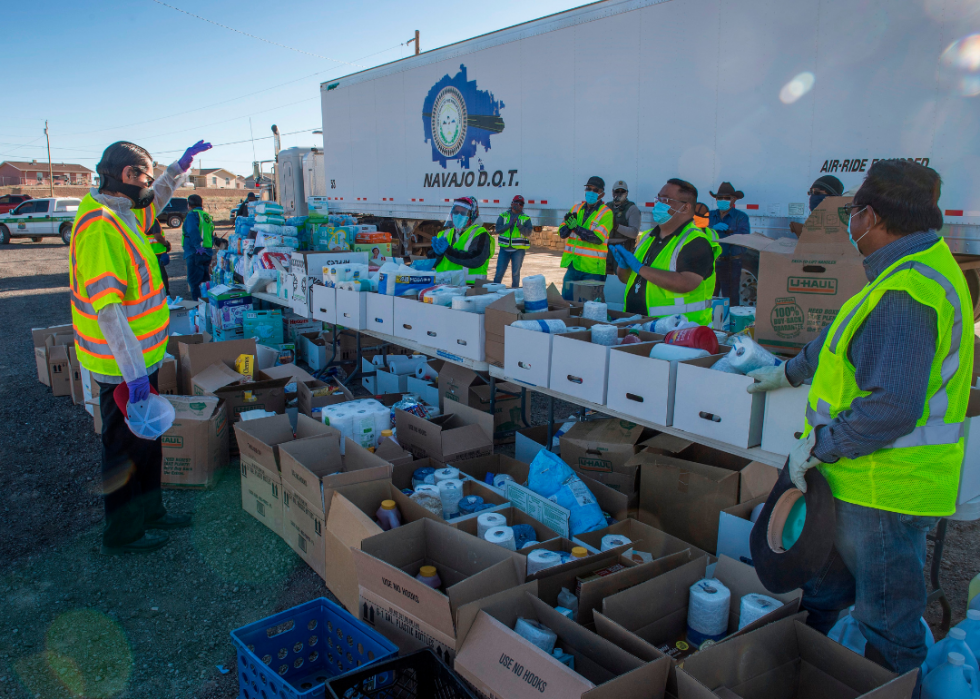
Some Native American communities see over 90% food insecurity rates
According to a pre-pandemic study conducted by UC Berkeley and four tribes in the Klamath River Basin of Oregon and California, 92% of households experienced food insecurity. This study is a microcosm of a larger problem facing many Native American communities across the United States.
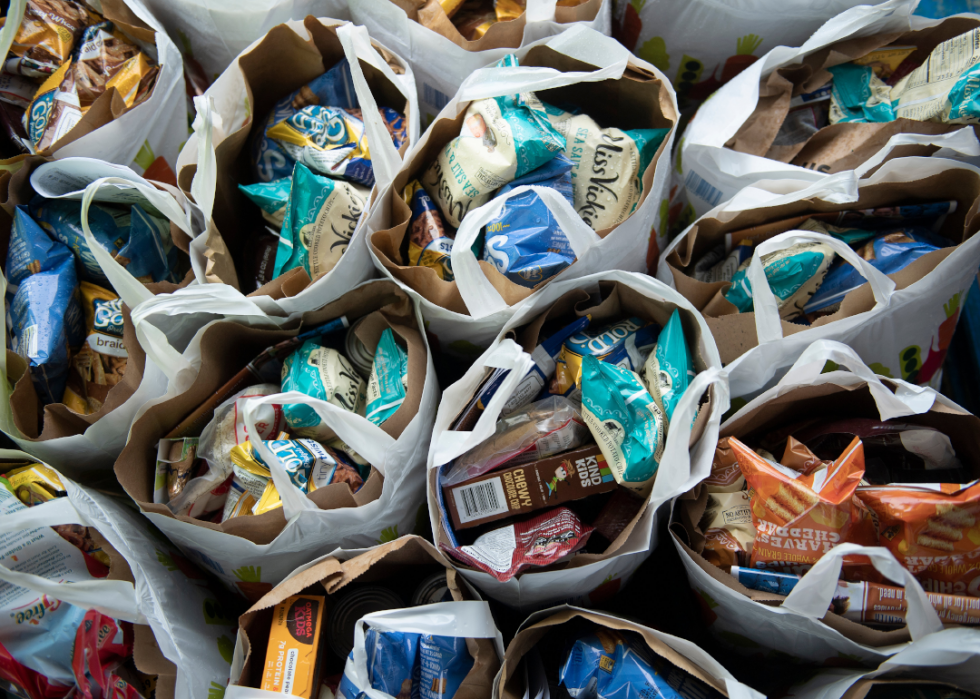
Mississippi has the highest prevalence of food insecurity
At 15.3%, Mississippi had the highest state-level prevalence of food insecurity between 2018 and 2020.
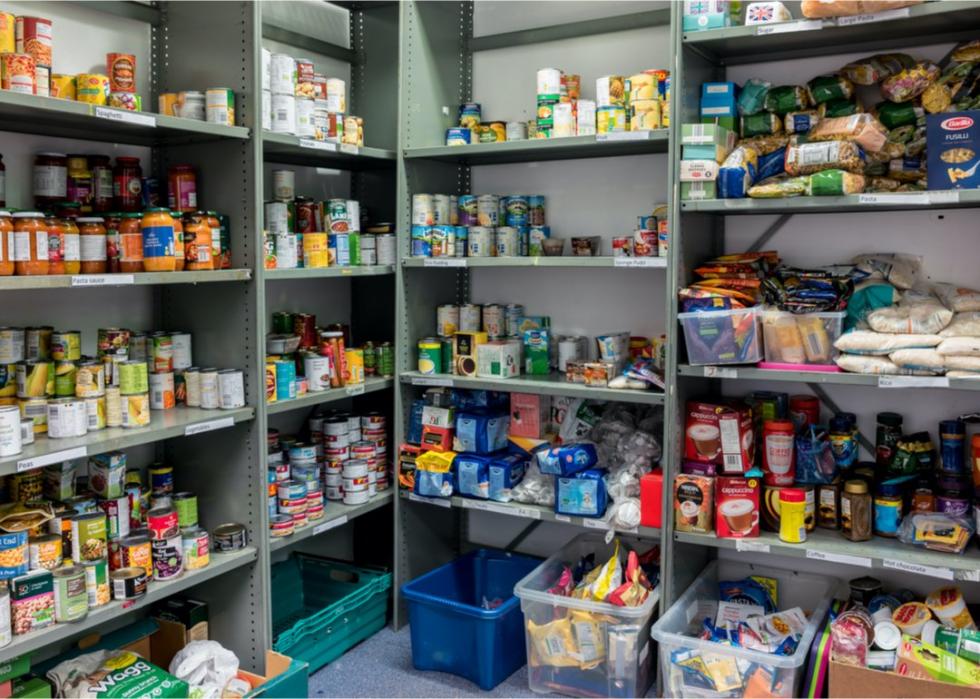
New Hampshire has the lowest prevalence of food insecurity
At 5.7%, New Hampshire had the lowest state-level prevalence of food insecurity between 2018 and 2020.
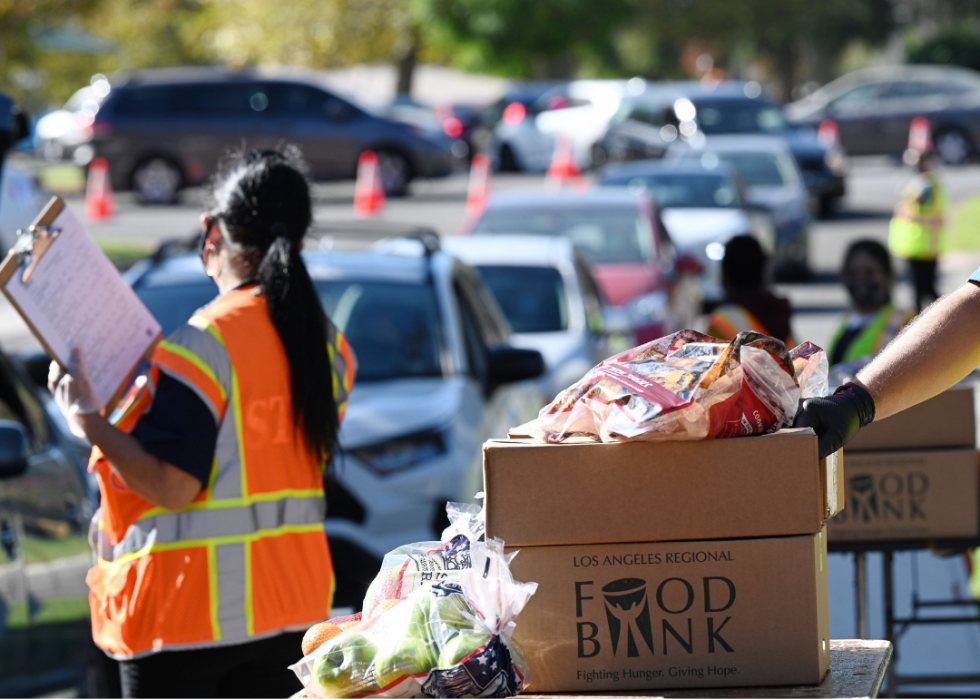
People between 25–39 have the highest rates of food insecurity
When broken out by age group, people between the ages of 25–39 have the highest rates of food insecurity, with more than 65 million people reporting they sometimes or often lack enough food to eat, according to data from the Census Bureau Household Pulse Survey from Sept. 29 through Oct. 11, 2021. The next highest group of food-insecure people by age was adults between the ages of 40 and 54, with 63 million not having enough to eat sometimes or often.

More than 5 million seniors face food insecurity
Food insecurity affects about 7.1% of seniors (or a total of 5.2 million people in that age group), according to pre-pandemic Feeding America data from 2019. The report noted that seniors have been disproportionately affected by COVID-19 and additional numbers of older adults may have a difficult time accessing healthy food amid lockdowns.

Senior women are more food insecure than senior men
Women face higher odds of food insecurity once they reach 60 compared with men. Feeding America reports that 60.1% of food-insecure seniors are women.

Food insecurity declined for some subgroups of the population in 2020
According to a 2021 report released by the USDA, women and men living alone, households with a white person on a deed or rental agreement (also referred to as a reference person), and households in the Midwest saw a decreased prevalence of food insecurity from 2019 to 2020.
You may also like: Oldest cities in America
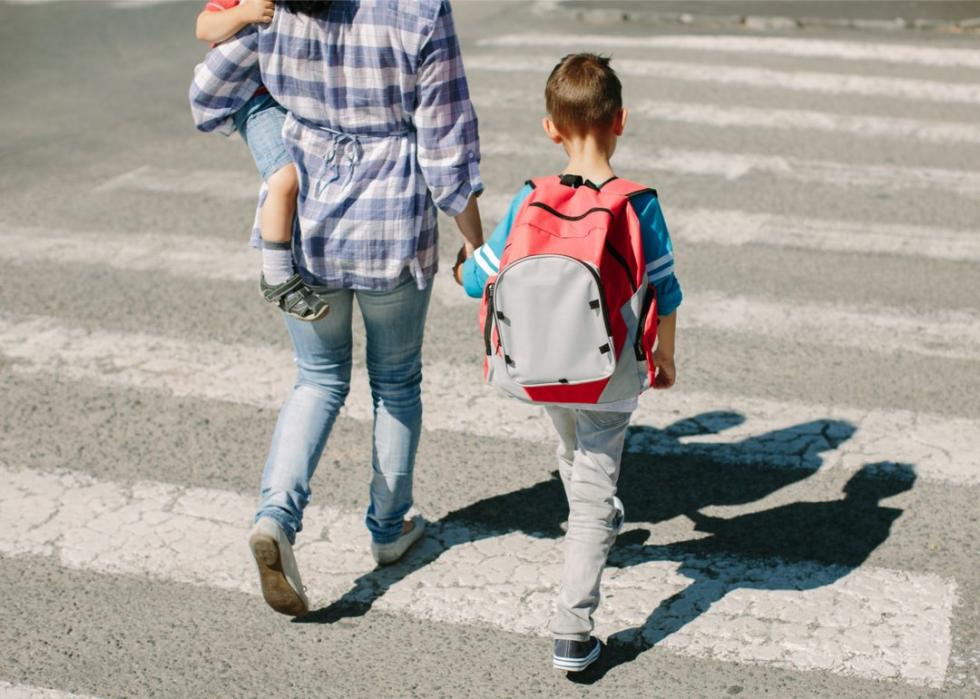
Complex family situations may increase the risk of food insecurity
Data from the Current Population Survey Food Security Supplement suggests that children in “complex family households” are at a higher risk of food insecurity than their counterparts in a traditional family with two married parents. In 2020, 27.7% of households with children headed by a single woman faced food insecurity; for households headed by a single man, that number was 16.3%.
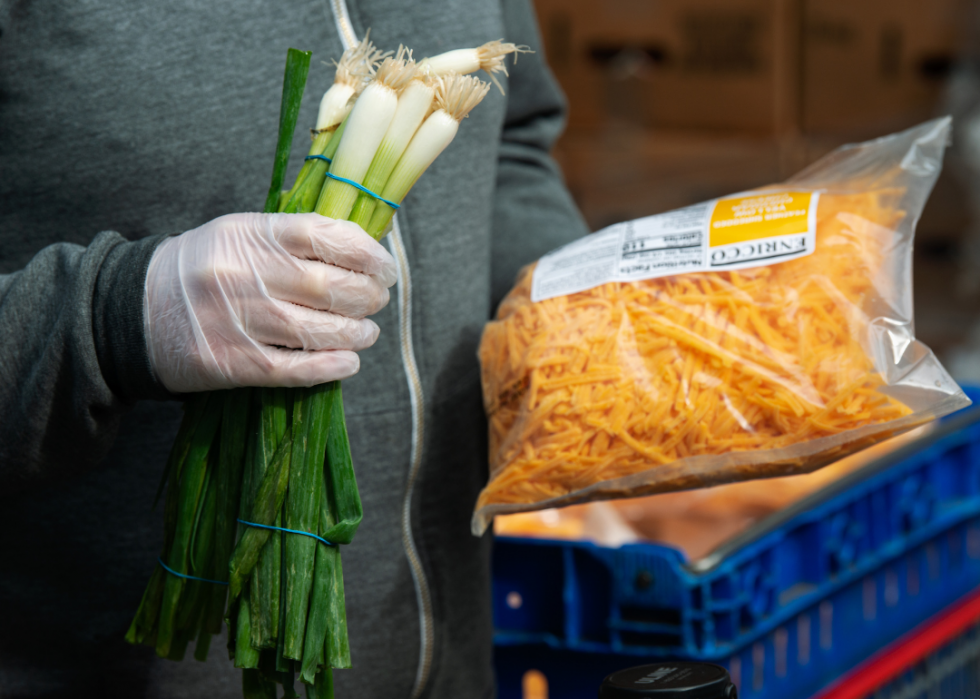
Spending on food and nutrition programs increased by 32% in 2020
Total $122 billion, federal spending on food and nutrition assistance programs including the Supplemental Nutrition Assistance Program (SNAP) and Nutrition Assistance Programs (NAP) was 32% higher in the fiscal year 2020 than the fiscal year 2019. The previous high of $119.8 billion, set in FY 2013.
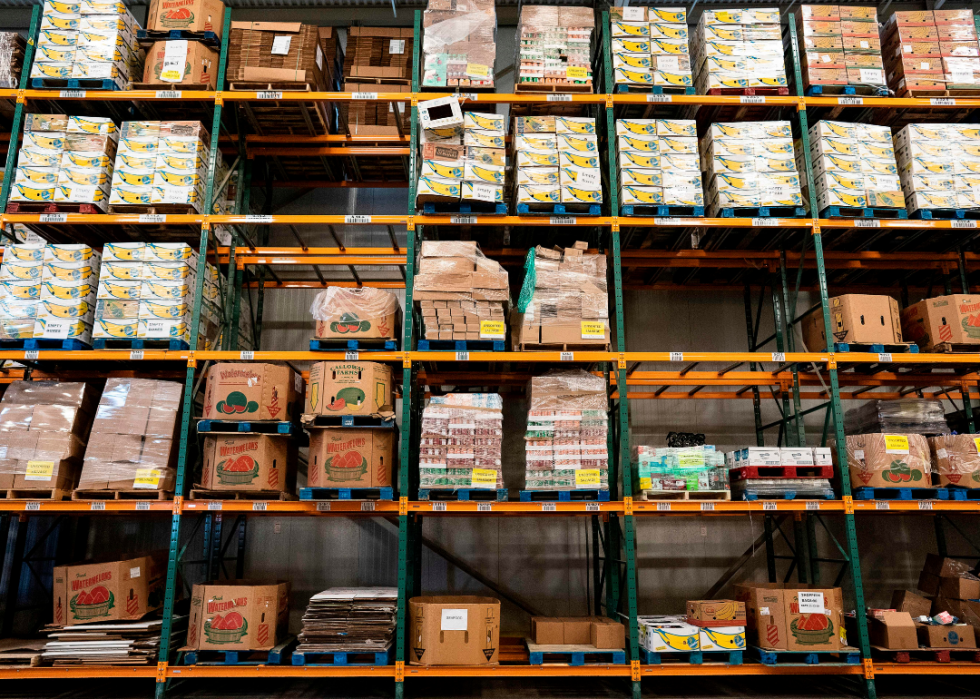
Federal child nutrition spending decreased in 2020
While it may seem counterintuitive, federal spending on child nutrition programs like the Special Supplemental Nutrition Program for Women, Infants, and Children (WIC) and Commodity Supplemental Food Program (CSFP) decreased by 9% in 2020 due to the closures of schools and child care facilities that most often utilize this type of assistance.
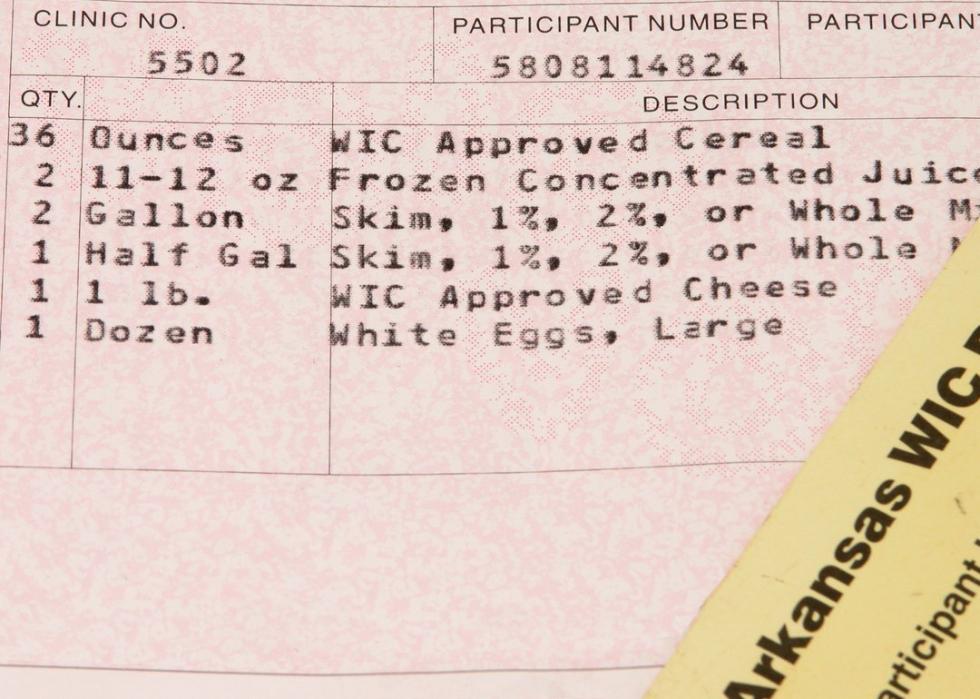
WIC enrollment declined in 2020
Roughly 6.3 million people received Special Supplemental Nutrition Program for Women, Infants, and Children (WIC) benefits in 2020—a decrease from 6.4 million in 2019. The program is dedicated to providing healthy food to low-income mothers, as well as children up through 5, “who are at nutritional risk.” Despite the increasing need for this type of assistance over the last year, outdated and confusing systems exacerbated by the pandemic resulted in decreased enrollment.
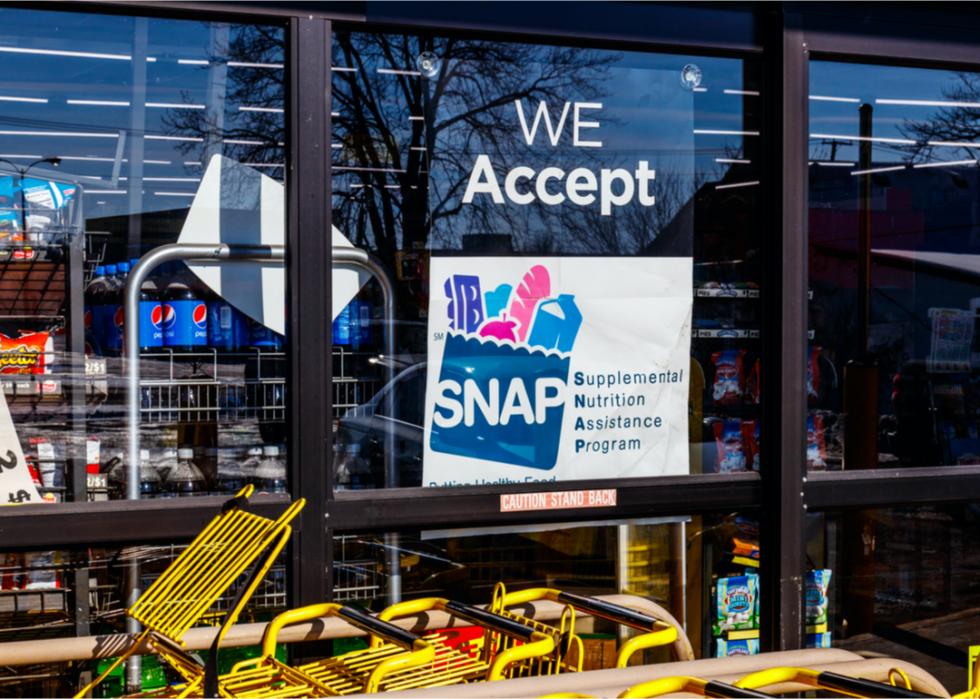
SNAP recipients receive an average of $121 per month
Sometimes called food stamps, the Supplemental Nutrition Assistance Program (SNAP) provides an average of $121 per month per participant. That’s about $1.39 per meal. Research from the Center on Budget and Policy Priorities has found that about half of SNAP recipients still face food insecurity. Beginning in March 2020, eligibility and program terms were expanded to provide greater relief for enrollees amid the pandemic.
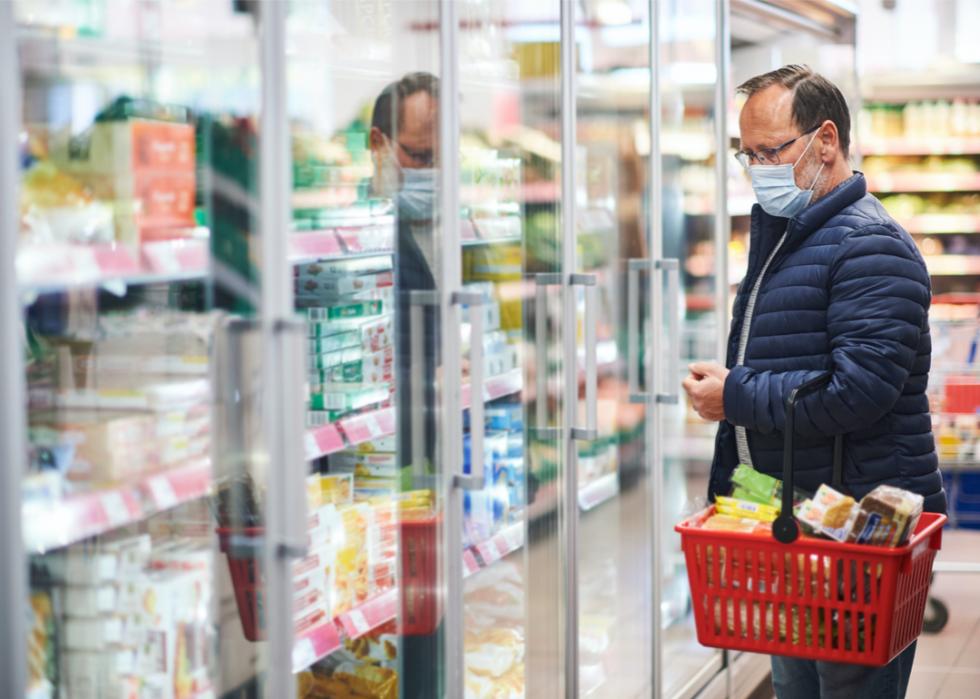
One month can make a difference in food insecurity
Many families are just one “bad month” away from becoming food insecure, according to Feeding America. An emergency expense, like a car repair or medical bill, or a job loss can put a family in the tough position of choosing between groceries and paying for other essential needs.

Food insecurity is connected to a higher BMI
A 2015 study by the CDC found that people who experienced food insecurity were more likely to have an increase in their body mass index (BMI). The researchers also suggested that portion control and budgeting skills may be key to helping people with food insecurity manage their weight.
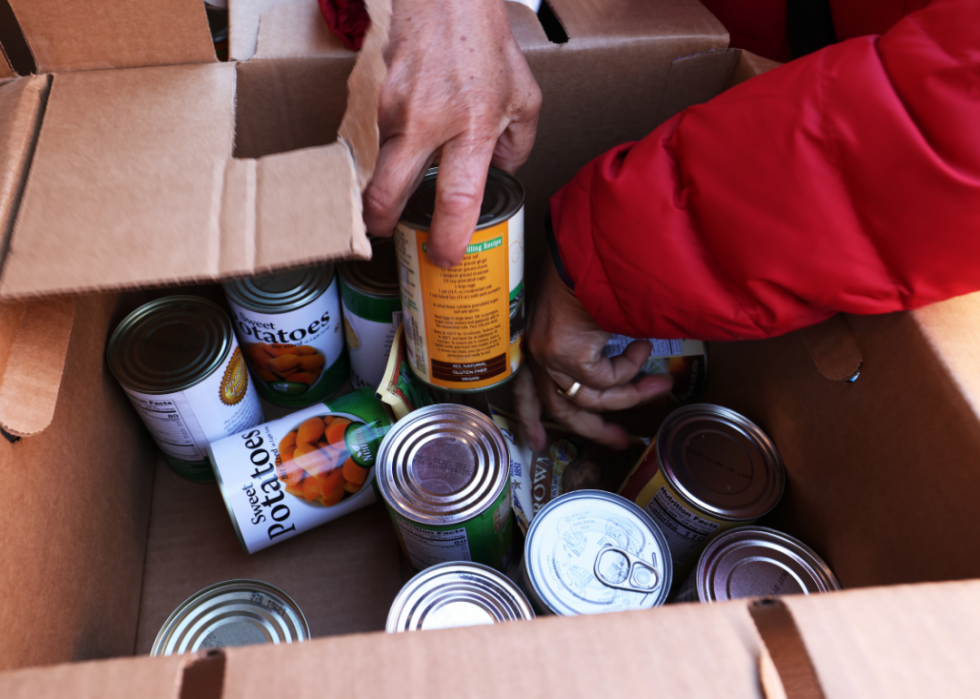
Food insecurity increases the risk of chronic disease
A 2017 report from the USDA found a connection between food insecurity and chronic diseases, such as heart disease, hepatitis, diabetes, arthritis, and cancer. Its data showed that people with very low food security were nearly 53% more likely to have a chronic illness.
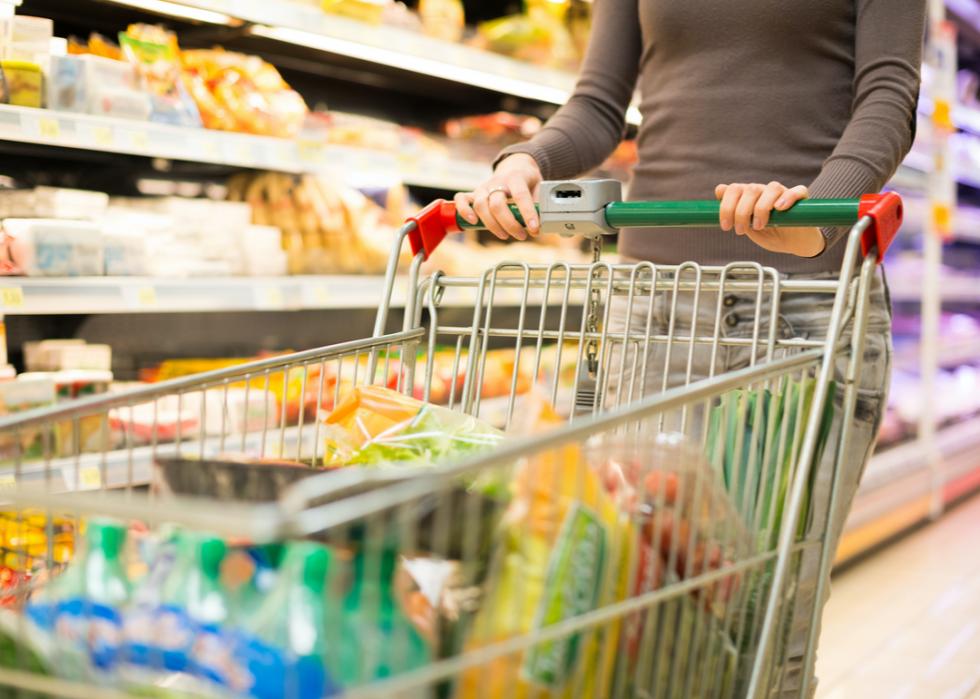
Teachers use their own funds to feed students
Nearly six in 10 teachers say they regularly pay for food for students from food-insecure households, No Kid Hungry reports. On average, educators spend $300 out of pocket to help feed their students.
You may also like: 25 terms you should know to understand the climate change conversation
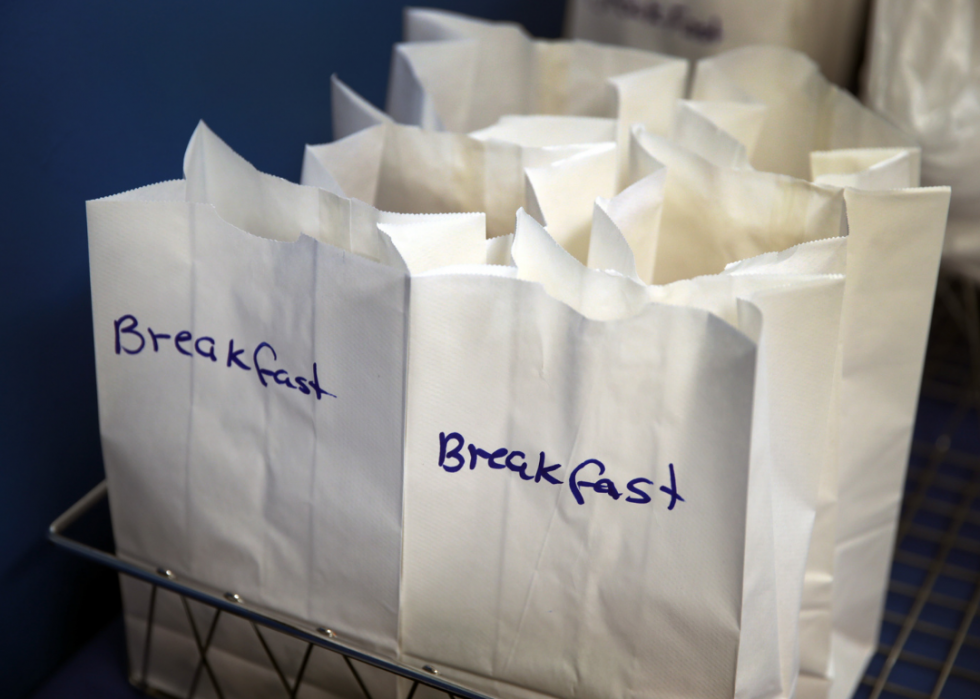
Schools often provide free breakfast to kids
In 2019, 14.7 million children participated in the School Breakfast Program. The initiative helps reduce food insecurity by providing free or low-cost breakfast to students. COVID-19-related school closures posed a significant barrier to breakfast and lunch programs for children; to adapt, the USDA has worked with states to establish pick-up locations so students could still have access to reduced-cost and free meals.
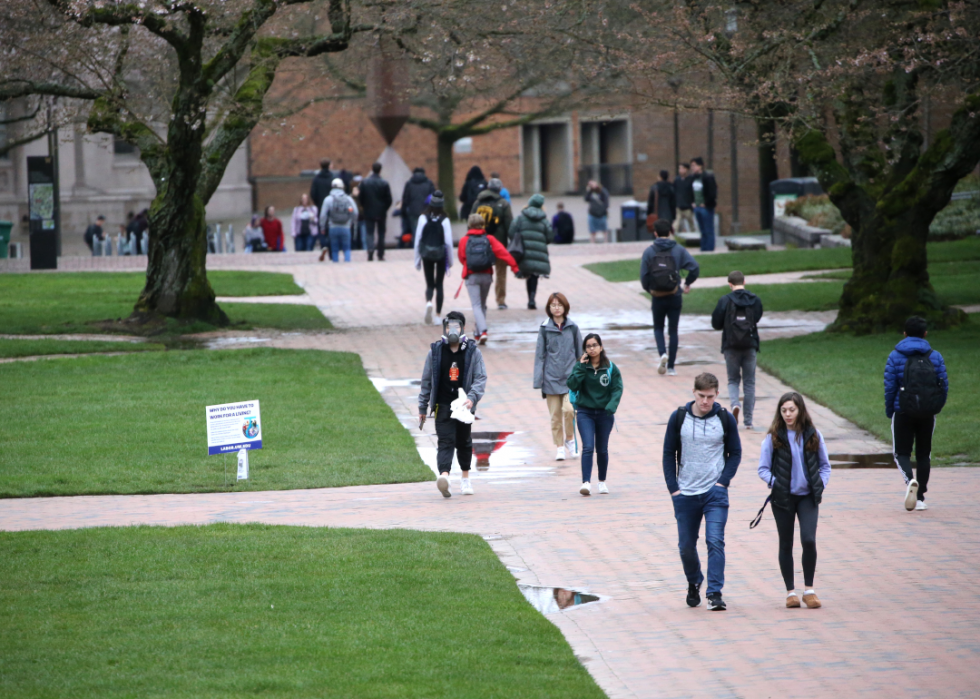
Food insecurity is common among college students
The rates of food insecurity among college students may be anywhere from 20% to more than 50%, according to various studies conducted between 2009 and 2019. Declining resources for students, exclusion from SNAP, and limited part-time job opportunities may all contribute to hunger on college campuses.
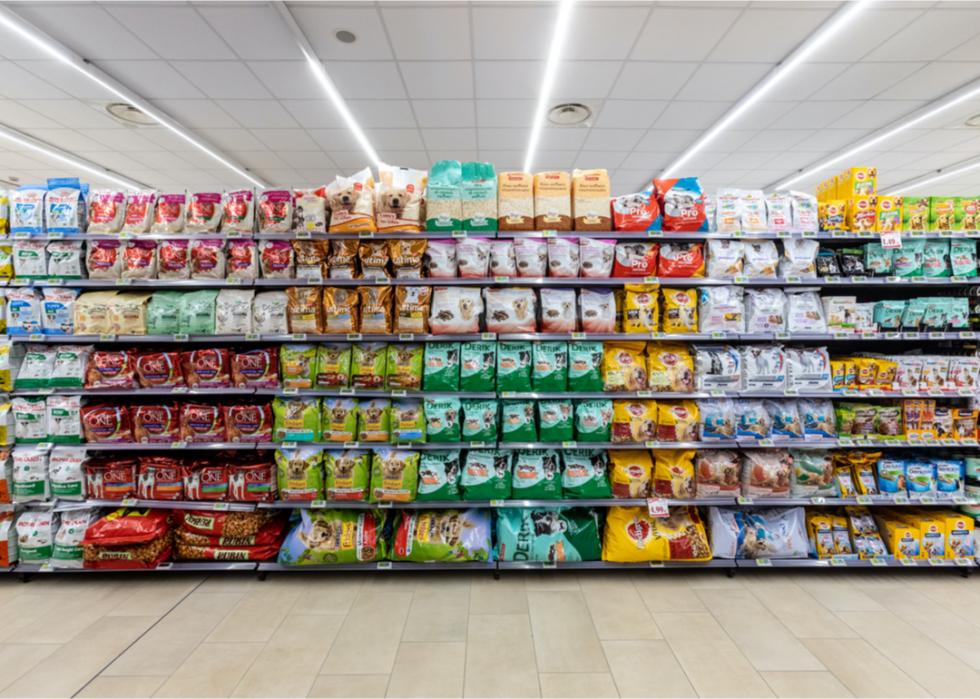
Pet owners are less likely to be food insecure
People who own pets are less likely to be food insecure than non-animal owners, according to a 2019 survey from the University of Pittsburgh. The researchers say that the responsibility of caring for a pet may motivate owners to keep their pantries stocked for themselves and their four-legged friends.
You may also like: Worst-run cities in America

Food insecurity can also affect pets
Pet food insecurity is a problem among low-income families in the United States and may exacerbate hunger among people. In a 2017 survey of food bank workers, 75% of respondents said they believed food bank users were likely to share their own food with pets if they didn't have anything else to feed their furry companions.

Unemployment benefits reduce the risk of food insecurity
A 2020 study on government benefits and food insecurity during the coronavirus crisis has found that the $600 per week federal unemployment insurance was linked to a 4.4 percentage point reduction in food insecurity. The benefits helped people who recently lost their jobs continue to put food on their tables.
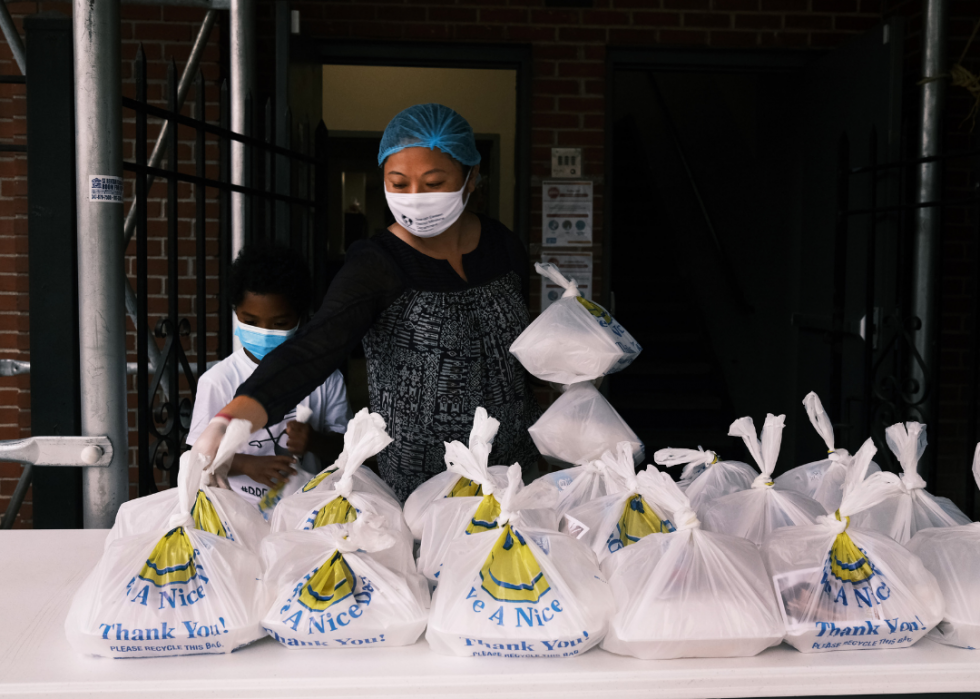
Unemployment exacerbates food insecurity
Around 31% of households earning less than $75,000 who experienced unemployment at any point during the pandemic became food insecure, according to a July 2020 study from the National Center for Biotechnology Information (NCBI). A third of households also reported having less food to eat due to the financial impact of unemployment.
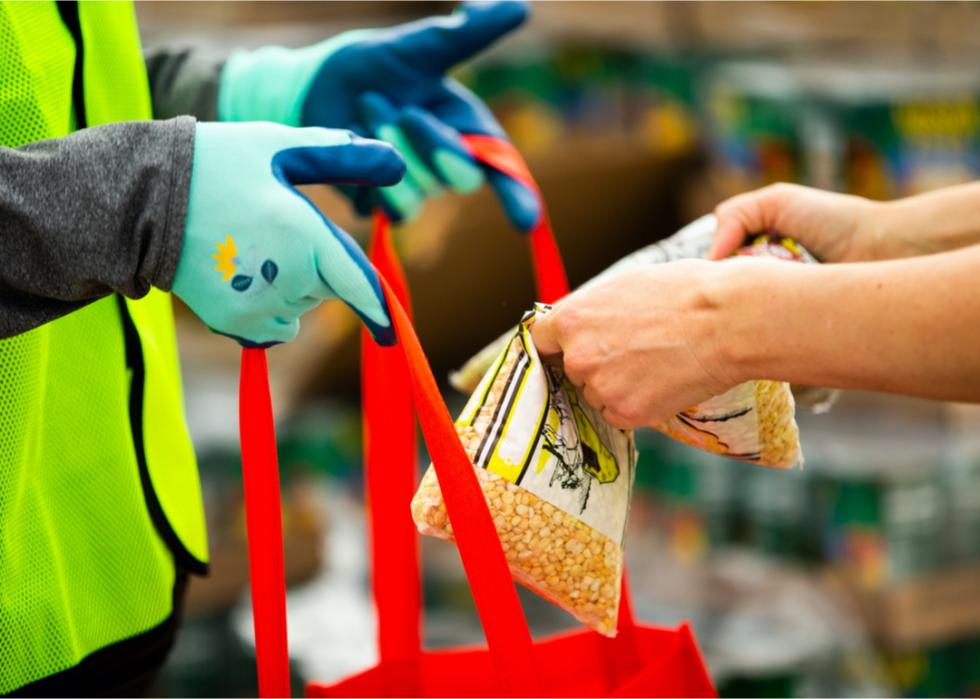
50% of low-income parents are forced to shrink kids’ meals
Nearly half of low-income parents say they don’t have enough money to feed their families every month. Around 25% of low-income parents have needed to shrink the size of meals for their children due to financial difficulties at home, according to No Kid Hungry.
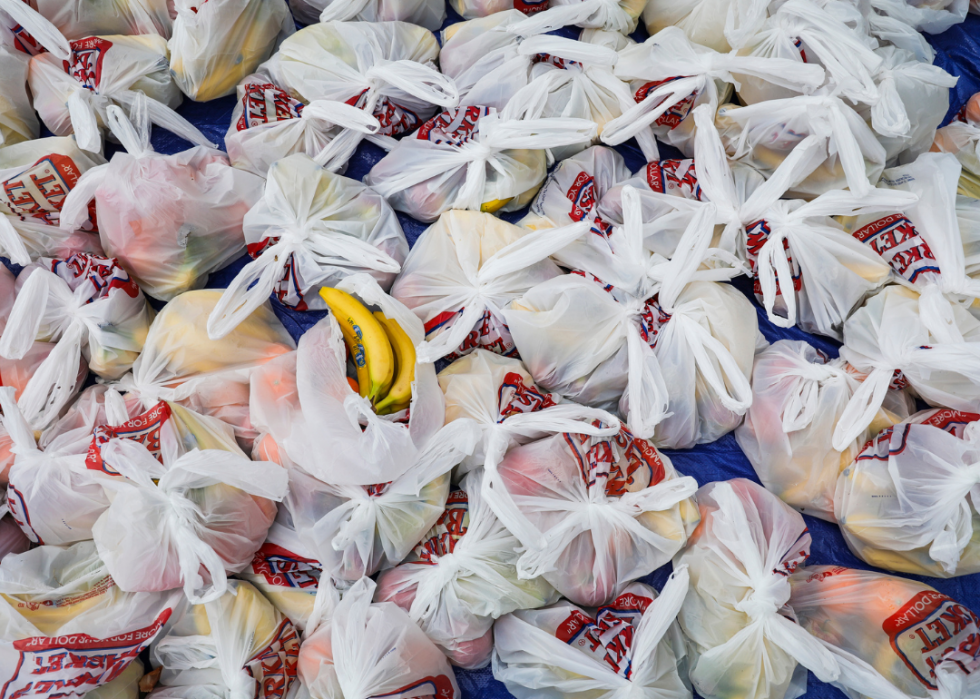
Childhood hunger correlates with less success later on
Experiencing hunger as a child can make a person less successful in the workforce once an adult, per a Feeding America report. It says that childhood food insecurity can impact a person’s physical, emotional, social, and mental abilities to perform on the job.
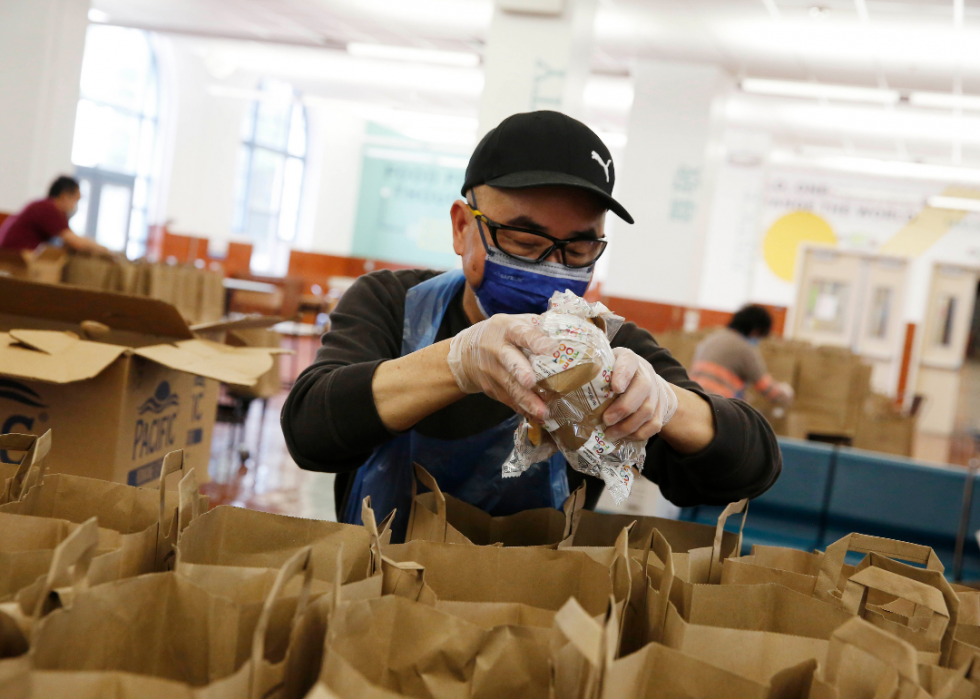
Early childhood hunger can damage learning skills
Experiencing hunger very early in life can reduce a person's ability to learn, Feeding America has learned. More specifically, chronic undernutrition before 3 years of age reduces a person's ability to learn quickly and take in a lot of information due to changes in the brain and central nervous system.
You may also like: Major newspaper headlines from the year you were born
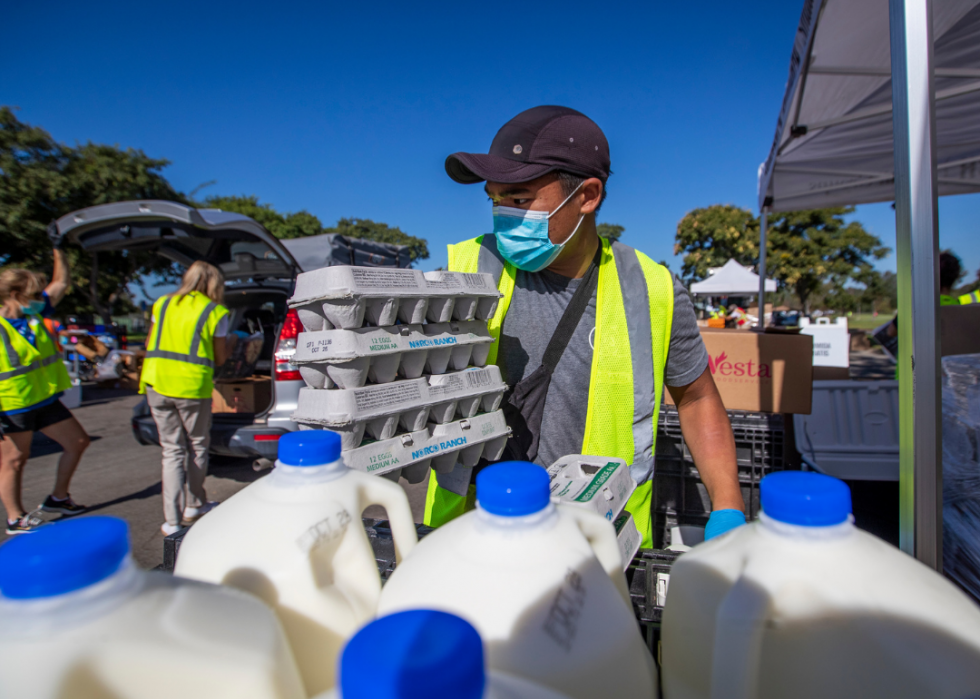
Food banks are in high demand
Demand for services has spiked at food banks during the pandemic. Representatives at around 4 in 5 food banks across the country say they’re now helping more people than in 2019, Feeding America reports.
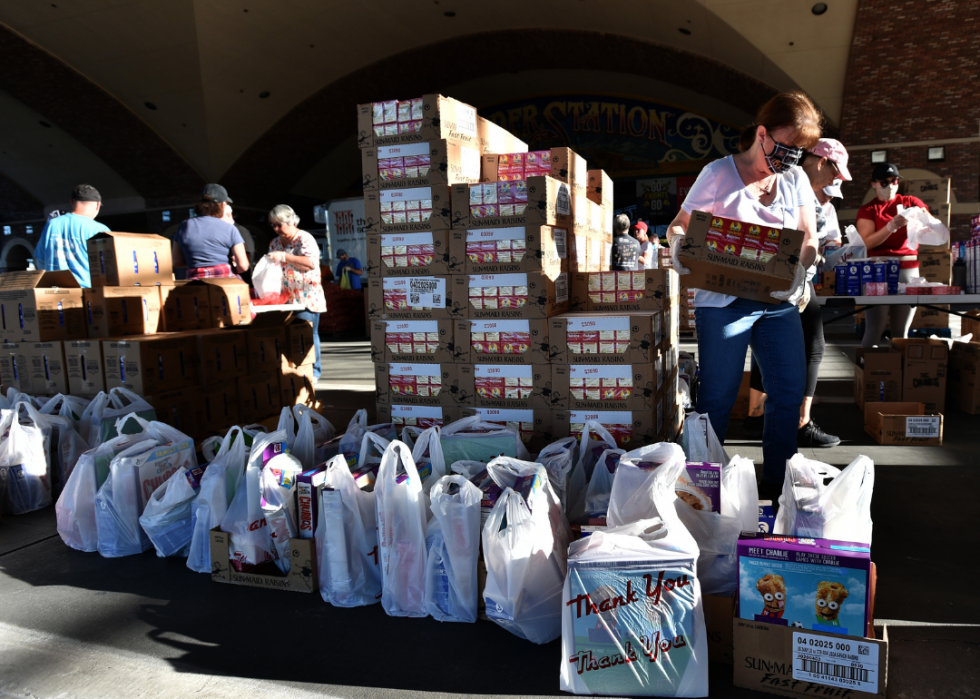
Number of food banks has grown in recent decades
Food banks have become much more widely available in the United States in recent decades than they were in the past. While there were just a couple of dozen food banks nationwide in 1980, according to Move for Hunger, there are now more than 200 providing food to tens of thousands of organizations.
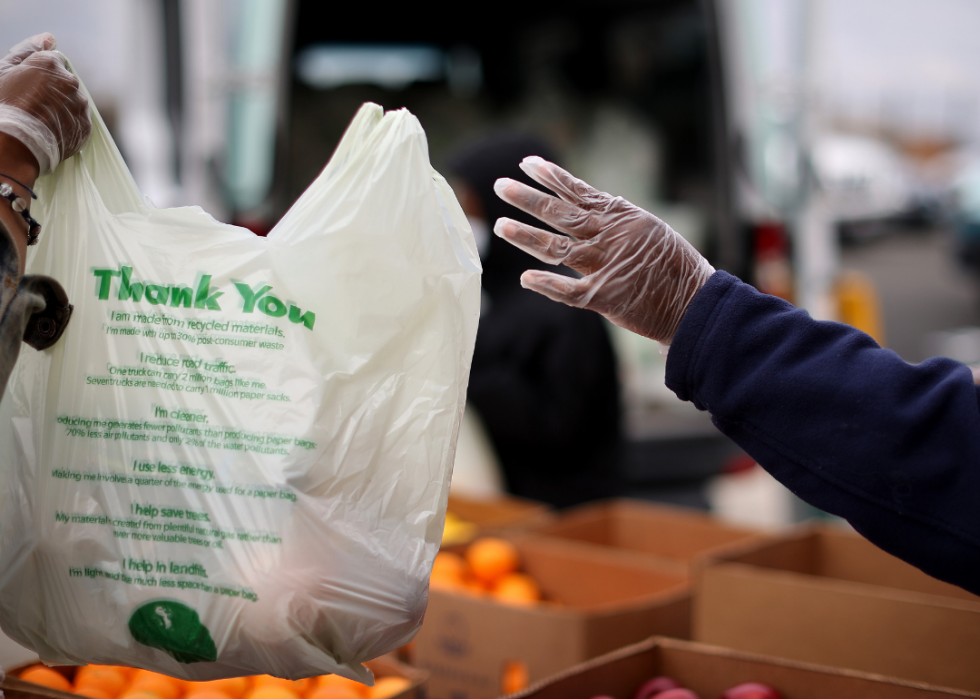
As many as 25% of veterans face food insecurity
Food insecurity is relatively common among those who have served our country. While estimates of hunger among veterans vary, some studies estimate that it may affect nearly a quarter of all veterans in the United States.
You may also like: States that have accepted the most refugees in the past decade
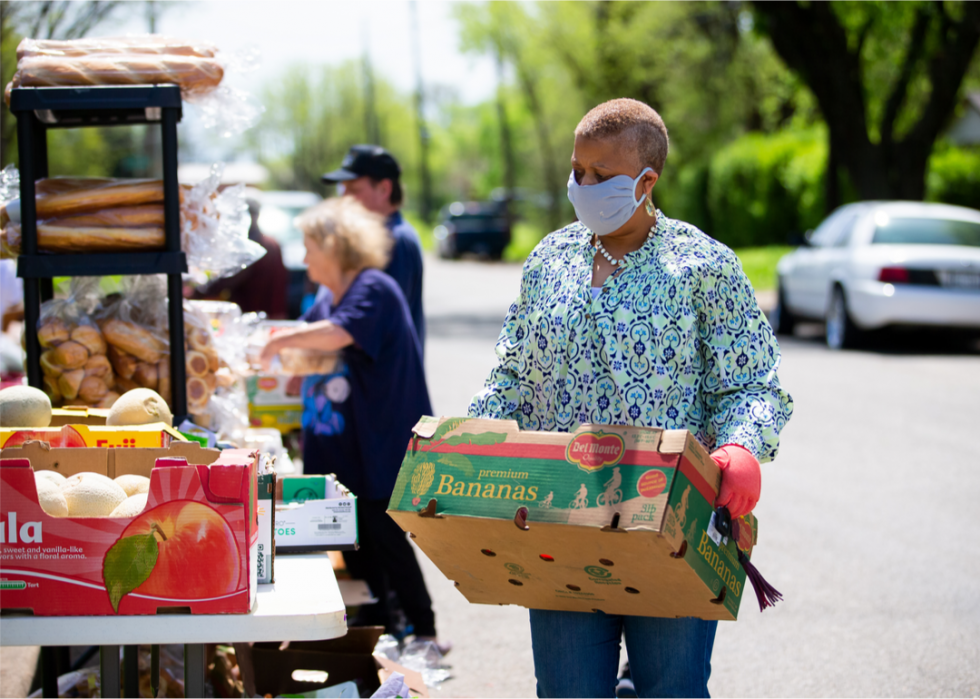
Certain veterans are more vulnerable to food insecurity
Certain subgroups of veterans face higher rates of food insecurity. One January 2020 study found food insecurity affects 28% of female veterans, 35% of former military members who have serious mental health conditions, and 49% of vets who are or have been homeless.
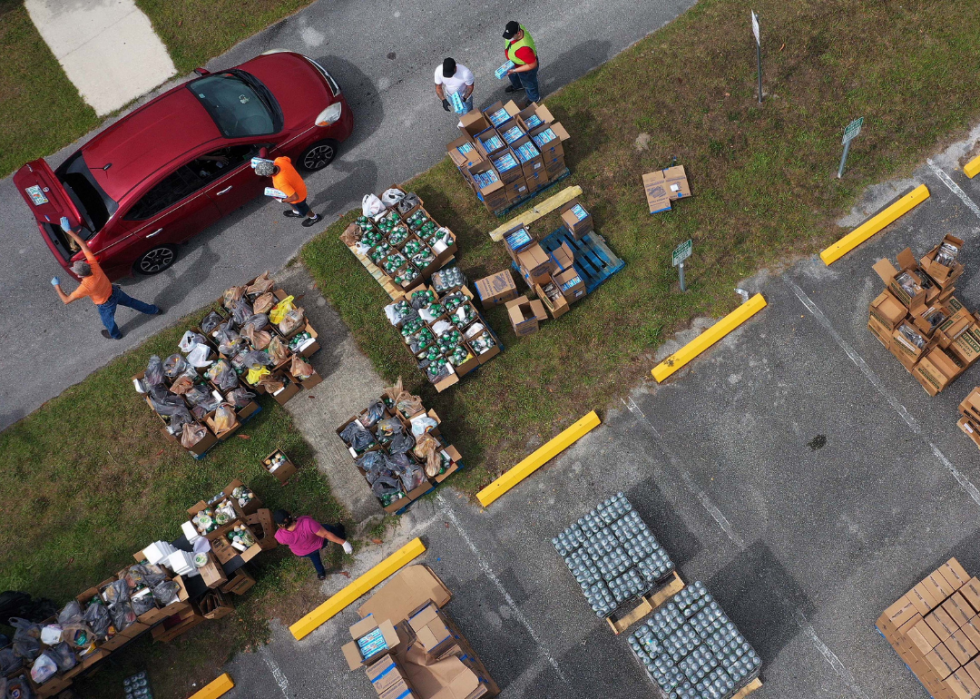
Disabilities make people more vulnerable to food insecurity
People with disabilities face higher rates of hunger than the general population. A report from Syracuse University found that 31.8% of households coping with food insecurity had an adult with a disability.
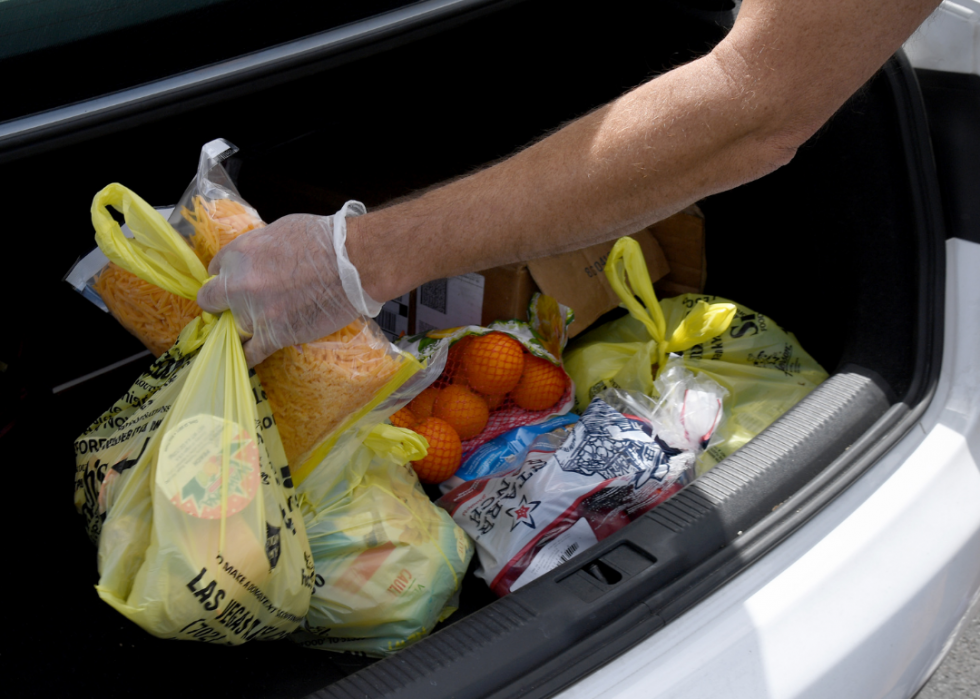
LGBTQ+ adults have high rates of food insecurity
Food insecurity affects an estimated 27% of LGBTQ+ adults, the Oregon Food Bank reported in 2019. One reason for the higher rates of food insecurity is the discrimination that LGBTQ+ people face when trying to get a job, access health care, or find housing.
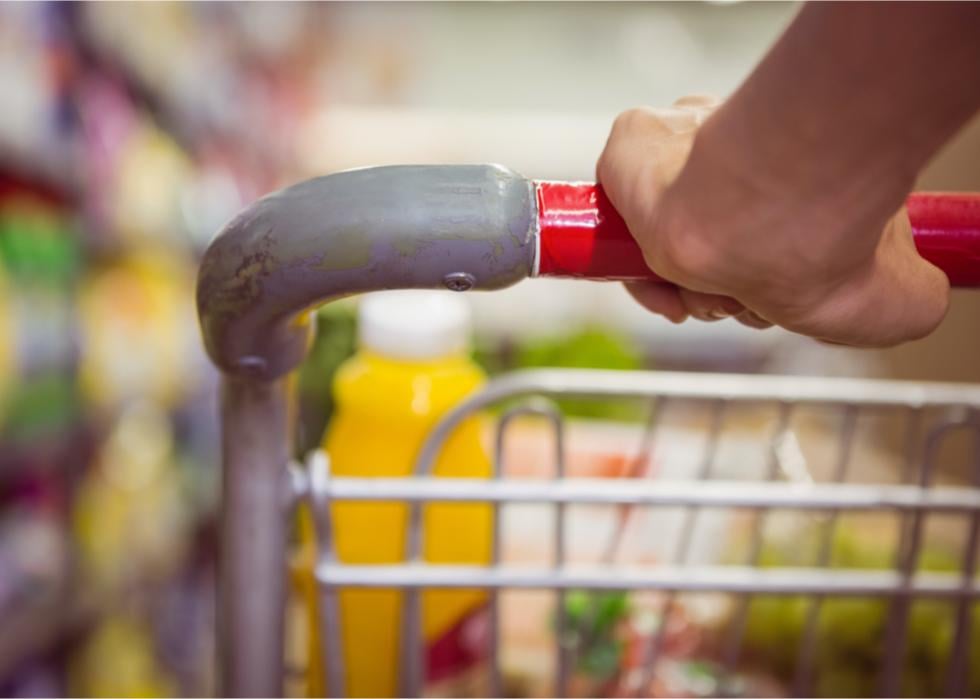
LGBTQ+ people of color have double the risk of hunger
Food insecurity is highly prevalent among LGBTQ+ people of color in the United States. Members of this community have double the risk of hunger as the general population, according to the Oregon Food Bank.
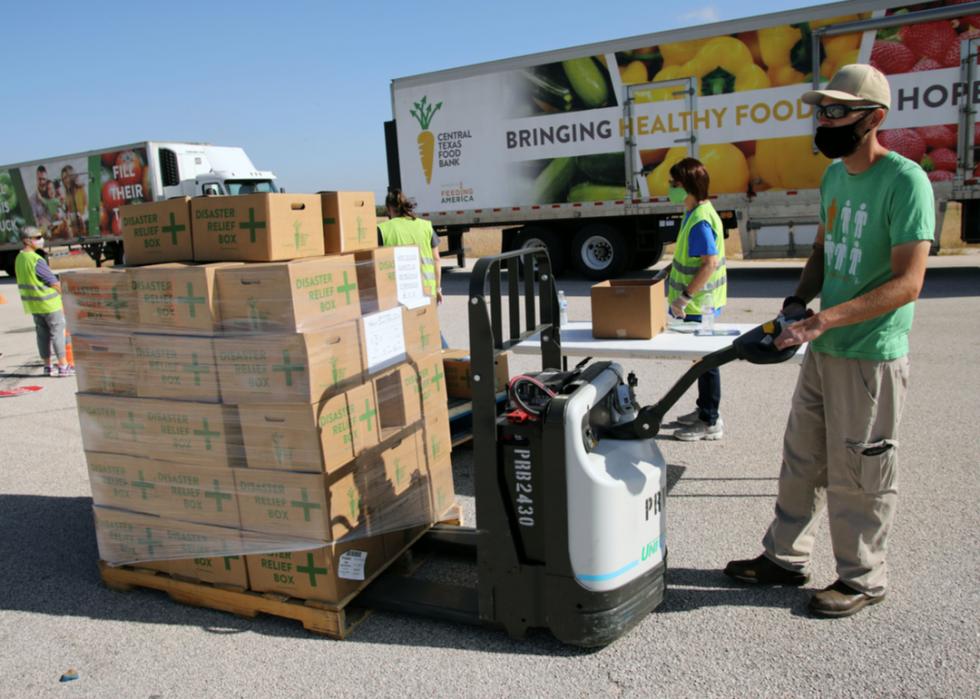
Food insecurity is worse in rural areas
Some 2.3 million families in rural areas experience hunger in America, notes Feeding America. While 63% of all U.S. counties are rural, 87% of counties with extremely high rates of food insecurity are rural.
You may also like: 100 years of military history
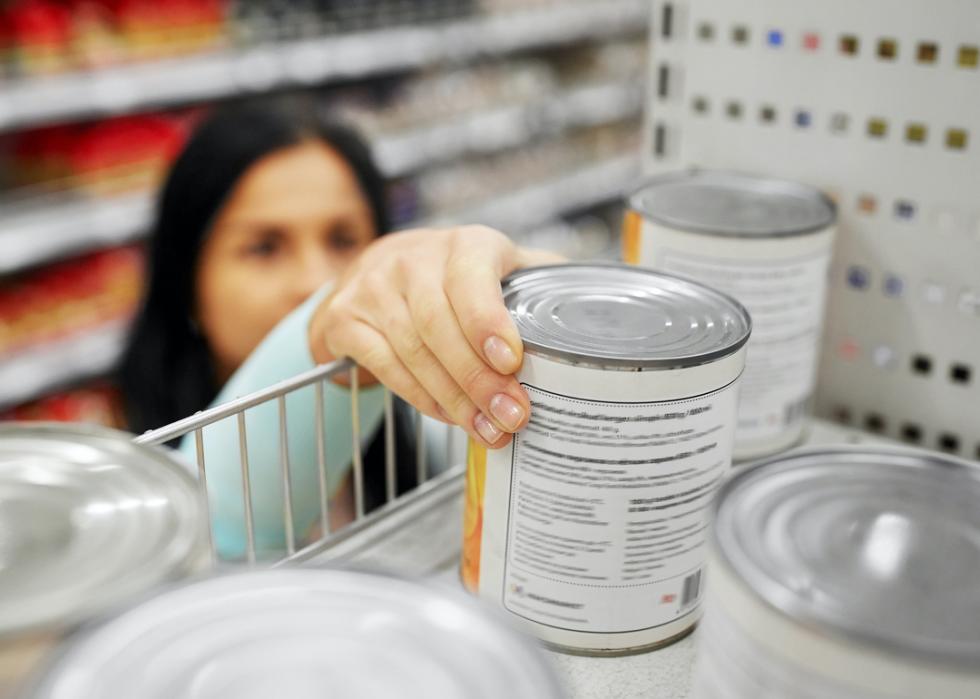
Gender discrimination increases food insecurity among women
Gender discrimination can make women more vulnerable to food insecurity. Nearly 29% of households led by a single woman face food insecurity, compared with 15.4% of households headed by a single man, according to a 2019 report from the USDA.

Food insecurity can make domestic violence more likely
Data collected by the California Women's Health Survey over the course of six years (released in 2015) showed an association between food insecurity and domestic violence. Researchers found that women with severe food insecurity had higher rates of intimate partner violence.
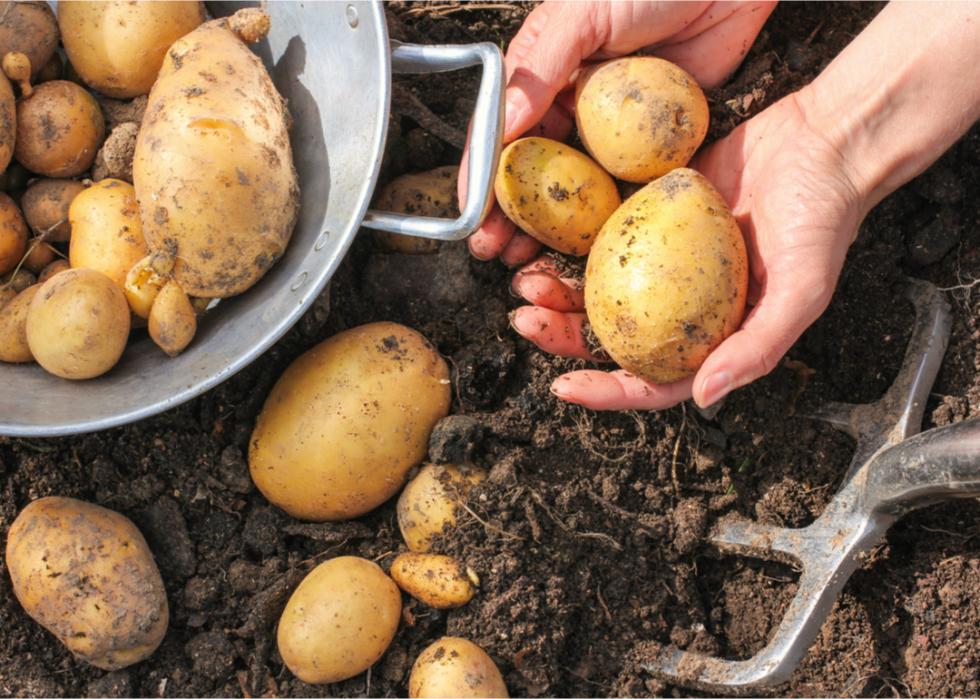
Urban gardens help reduce food insecurity
A 2016 study conducted by the University of California and Santa Clara University found that people who maintained urban gardens ate more veggies and experienced less food insecurity than the general population. Home gardeners also shaved an average of $92 off their monthly food bills by growing their own food.
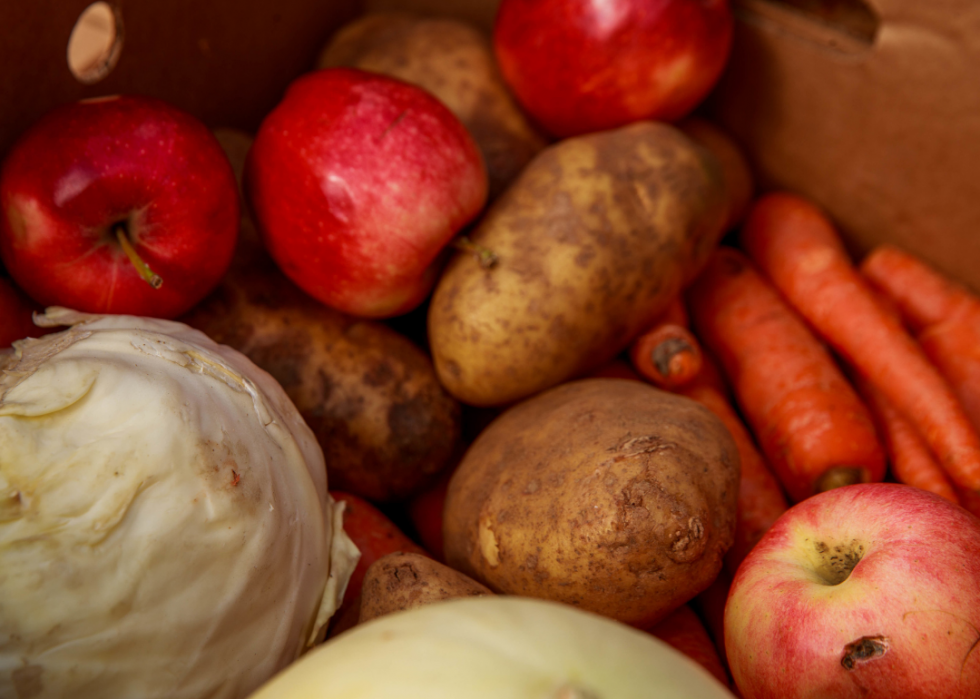
Curbing food waste helps reduce hunger
Around 72 billion pounds of perfectly edible food gets wasted each year in the United States. Feeding America helps redirect some of this food to families facing food insecurity to help reduce hunger.
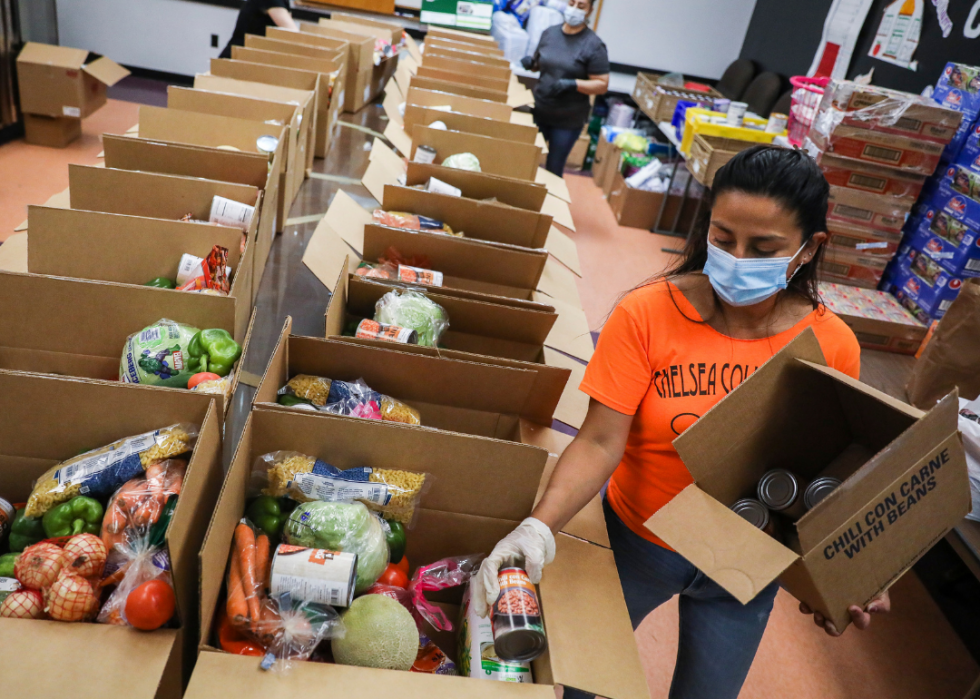
It’s better to donate money than food to pantries
While it’s tempting to drop off a bag of groceries at your local food bank or pantry, giving money is often a better way of showing support. The money allows these organizations to buy food at bulk rates that the average retail customer can’t get, thus helping the dollars go further.
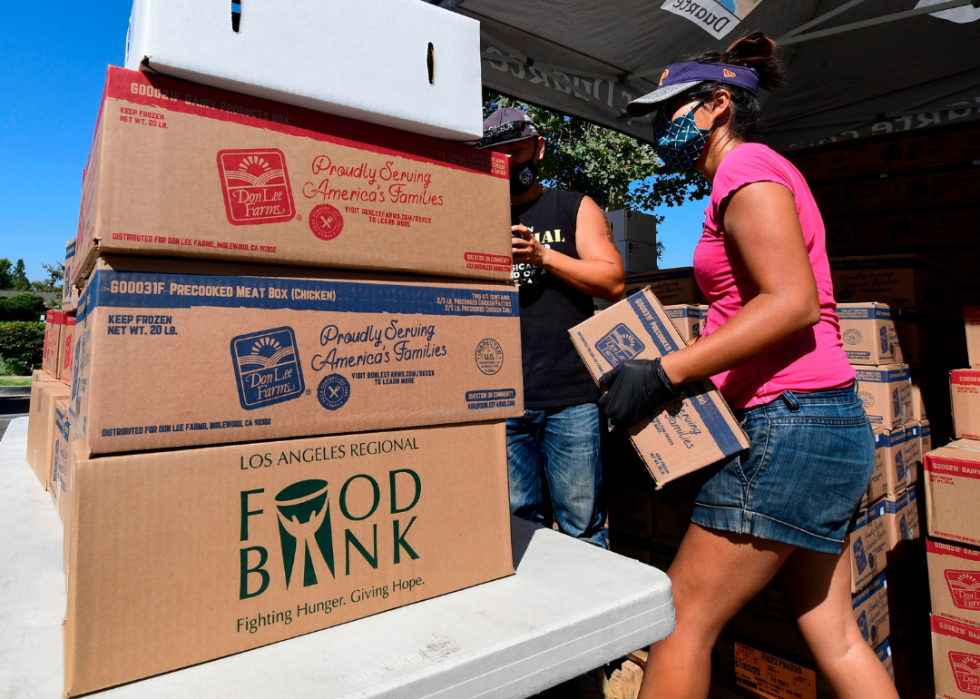
Two-thirds of food banks need volunteers now
Volunteer rates are down during the coronavirus pandemic. As a result, around two-thirds of food banks that are part of the Feeding America network are looking for volunteers. People willing to help can look up local food banks and pantries to find out where help is needed most.
You may also like: Iconic buildings that were demolished

The US won't solve hunger until 2034
Based on recent rates of food insecurity across the nation, the United States is still more than a decade away from ending hunger. Bread for the World estimates that the earliest hunger could end in the country is 2034.



